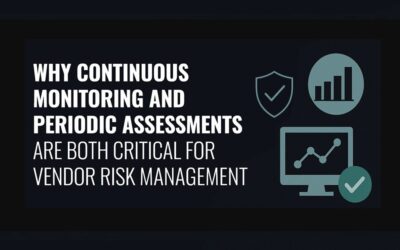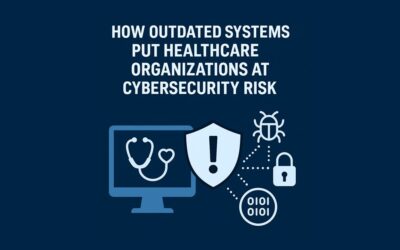The new year always brings a fresh perspective and a fresh round of cyber attacks. 2022 saw $6 trillion in cybercrime damage, and an estimated 33 billion accounts will be breached in 2023. The threat landscape changes almost daily, with new threat actors indoctrinated into the illicit process just as frequently.
If your organization feels fairly safe and secure as we begin 2023, be warned. Tired, old phishing tactics are losing their luster, and as response rates diminish, threat actors will get creative, inventing new ways to infiltrate your organization and your third-party suppliers. It is more important than ever to not only secure your networks but also to assess your vendors to make sure their networks are secure as well.
Here are the top threats to build strong defenses against in 2023:
Digital Supply Chain Hacks
Supply chain technology has introduced new holes for cyber criminals to crawl through. A recent report by Endor Labs proves that outdated open-source code is aiding the infiltration of supply chains by cybercriminals. The report stated that open source is a major benefit to hackers looking for a way in.
The report goes on to state that supply chains serve as a backdoor to cyber criminals whose real target is the larger organizations using these less-secure vendors. In recent years, notable companies, including LastPass, and DoorDash, have suffered third-party supply chain attacks.
Work-from-home Cybersecurity
Millions of unsecured devices worldwide have access to networks from home offices or remote locations, putting organizations at risk. Many IT departments have scrambled to update employee laptops and smartphones with the latest security software or to check devices for spyware.
In 2023, this remote or hybrid workforce will continue, and possibly expand when companies that cut back during the pandemic rehire and rebuild their teams. Employees may find themselves faced with an unknown employee who claims they were just hired and asks for login information.
Cybercrime-as-a-Service
The Dark Web serves as a virtual shopping mall for criminals, and cybercrime-as-a-service (CaaS) tools will become a top seller. Experienced cyber criminals are selling attack portfolios as a service to newbies, providing a second revenue stream. The new popularity of CaaS is built on the backbone and success of Ransomware-as-a-service (RaaS), a subscription-based model for purchasing effective ransomware tools on the Dark Web.
Experts predict that CaaS will soon expand to include deepfakes, where fraudulent photos, video, and audio files will be for sale on the Dark Web.
Deepfakes
The use of pictures, videos, and audio files is so common, especially on social media, that we’ve become numb to these forms of content. But imagine for a moment, if an email circulated to all employees or your shareholders containing a video of your CEO with fictitious information. This is the essence of deepfakes.
Deepfake technology allows cybercriminals to simulate photos, audio, and even video files by using artificial intelligence to alter existing or new content. This combined with a phishing scam or ransomware demand could be detrimental to companies. Experts predict that 2023 could be the year deepfakes make their debut in force.
Your Best Defense
In 2023 and beyond, it will become increasingly critical for organizations to rely on Artificial Intelligence (AI) for cybersecurity rather than just a team of cybersecurity experts. AI can more easily and more effectively detect unauthorized access or data breaches in real time, much faster than humans. Machine learning can also predict threats by monitoring data movements and typical network access patterns. In IBM’s Cost of a Data Breach 2022 Report, it’s estimated that companies using AI to detect data breaches will save an average of $3 million compared to companies that rely on human detection.
Where the human potential comes into play is in employee education and awareness. Building security awareness into company culture should become a vital part of every cybersecurity plan. Basic security training, password guidelines, and the use of two-factor authentication (2FA) should be an ongoing part of employee training. Your employees serve as gatekeepers to your most critical data, treat them that way.
Prepare Your Company for 2023
ProcessBolt’s all-in-one vendor risk management platform built on AI automates workflows for assessing vendors and internal business units, allowing companies to manage their entire vendor network with ease all within the ProcessBolt platform. Also included is our proprietary threat-detection software, ThreatScape, which alerts you immediately of unauthorized access to your network environment.
Be prepared for 2023! Sign up for a demo today and receive ThreatScape free for 30 days.




